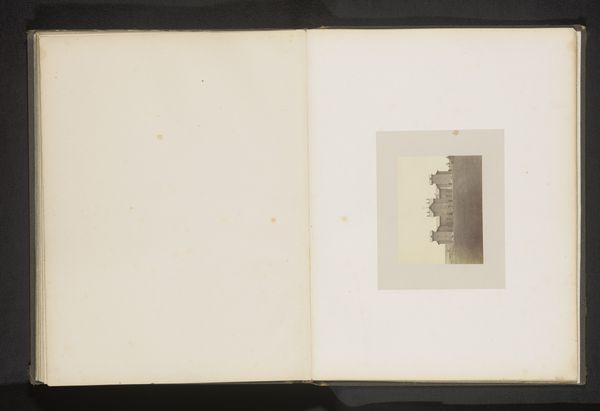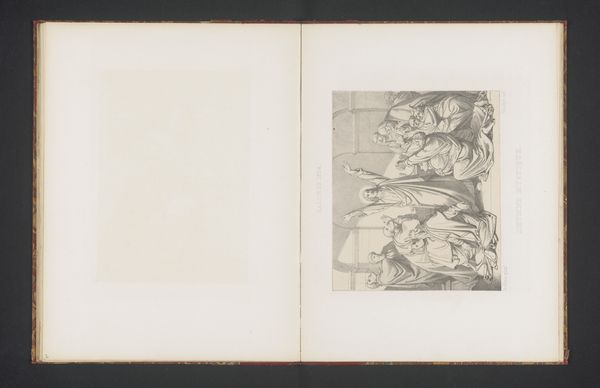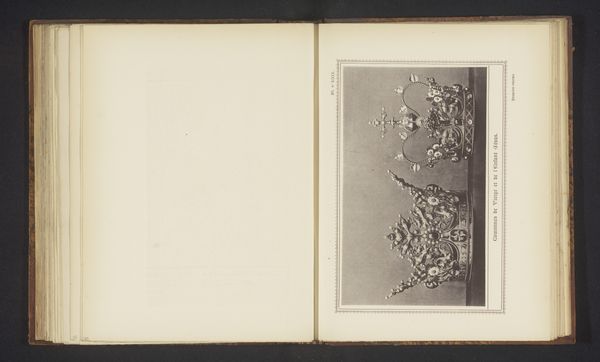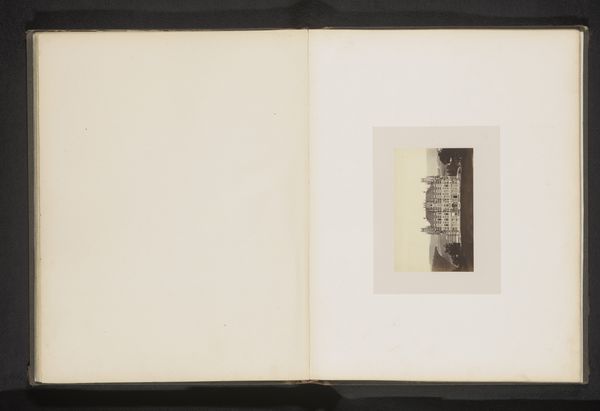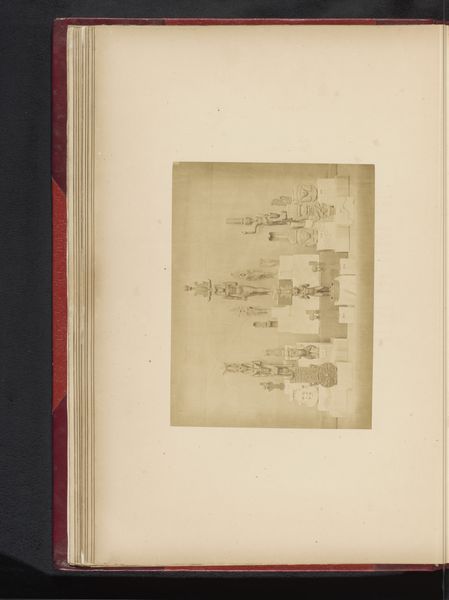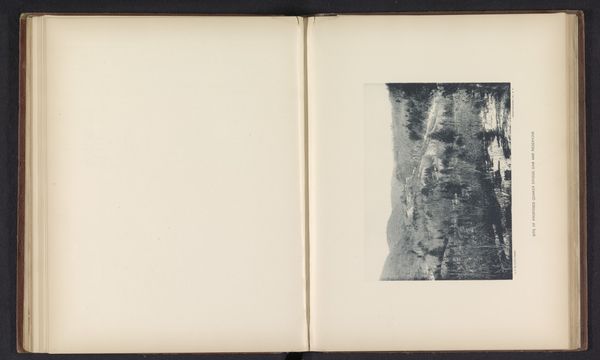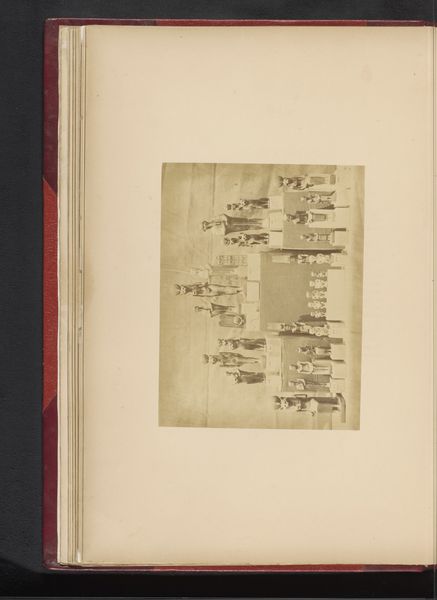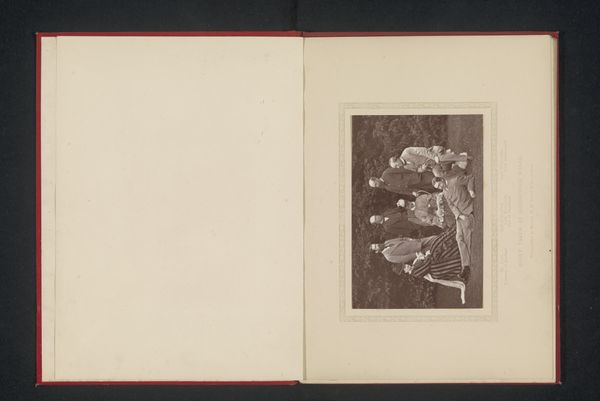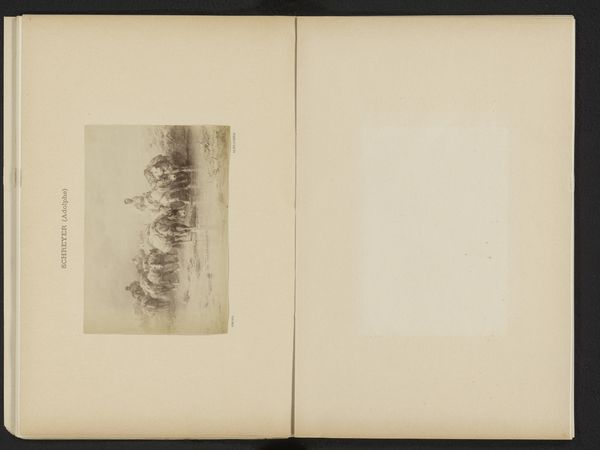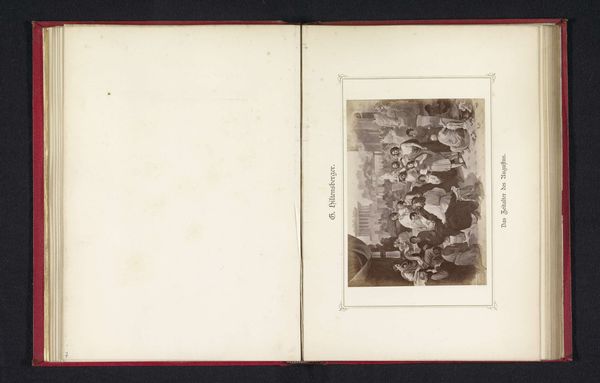
#
aged paper
#
toned paper
#
homemade paper
#
ink paper printed
#
hand drawn type
#
paper texture
#
personal sketchbook
#
hand-drawn typeface
#
watercolor
#
historical font
Dimensions: height 105 mm, width 152 mm
Copyright: Rijks Museum: Open Domain
Editor: So, this open book shows an image of what is labeled "Three copper crosses and five copper candlesticks," created before 1896 by Joseph Casier. It feels very staged, and formal, almost like a record. What do you make of it? Curator: This image is particularly interesting when we consider the labor and materials involved in its production and intended use. Copper, in both crosses and candlesticks, wasn’t just a material; it represented an investment of labor in the extraction, smelting, and crafting of it. Consider also the paper; likely homemade, certainly aged, it underscores the investment involved in crafting this image and the potential skill required to create hand-drawn type in its title. Editor: So, you’re saying it’s less about the religious objects themselves, and more about what they’re made *of*, and how? Curator: Precisely. The image itself is secondary to the reality of objects made and reproduced here. The use of photography to document these liturgical objects speaks volumes about the commodification and display of craftsmanship within a particular religious context. Can we see it also as a kind of "inventory?" Who consumed the image and the artifacts portrayed? Editor: That’s fascinating. It's like the photo, the objects, the paper and even the text are all layers of labor. It definitely shifts my perspective on seeing this just as a still life. Curator: Indeed. By emphasizing the material realities, we disrupt traditional art historical narratives that privilege symbolic or aesthetic readings, challenging established ideas of artistry itself, moving towards understanding and contextualization instead.
Comments
No comments
Be the first to comment and join the conversation on the ultimate creative platform.

